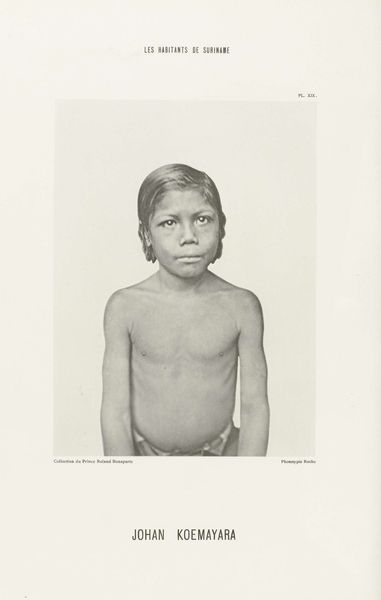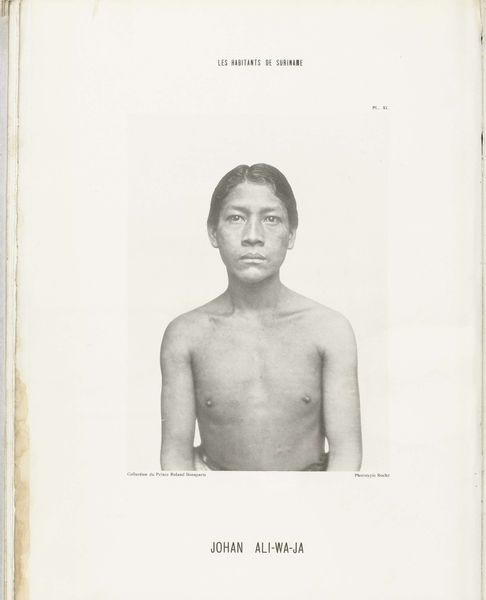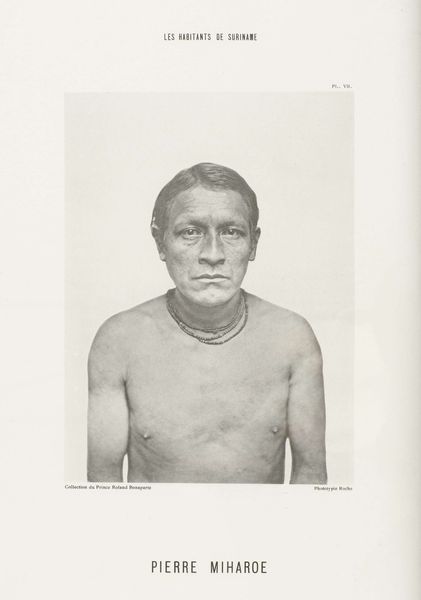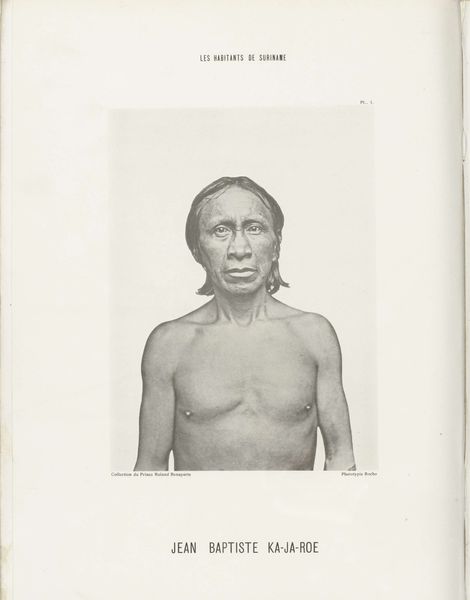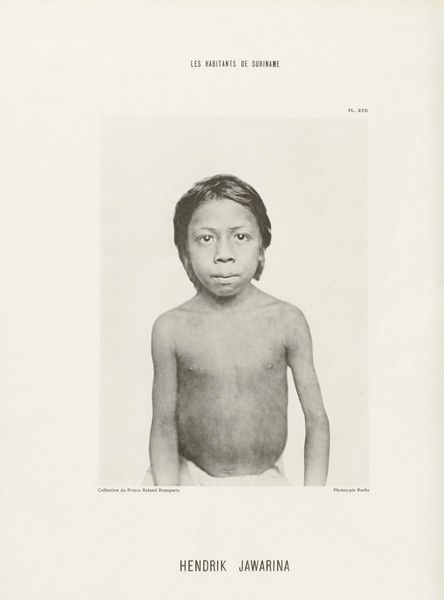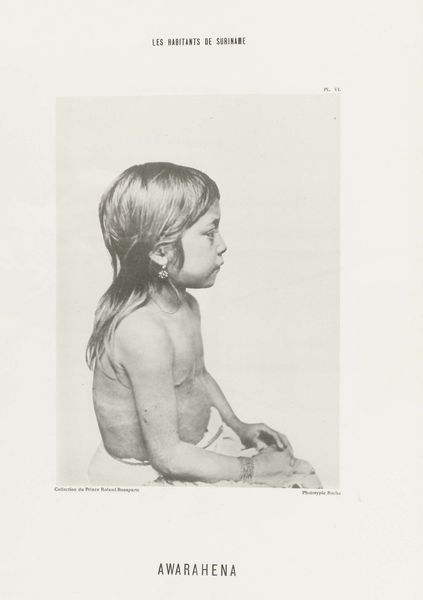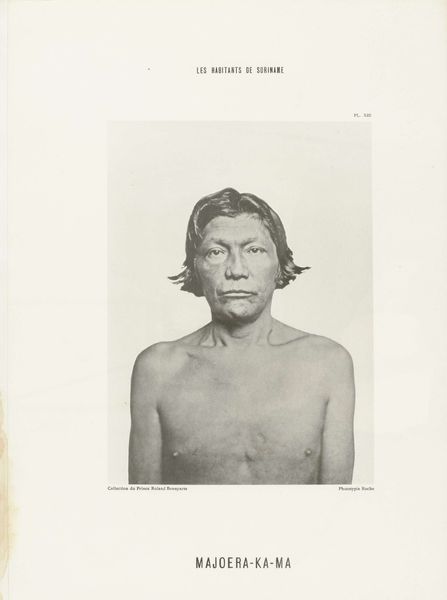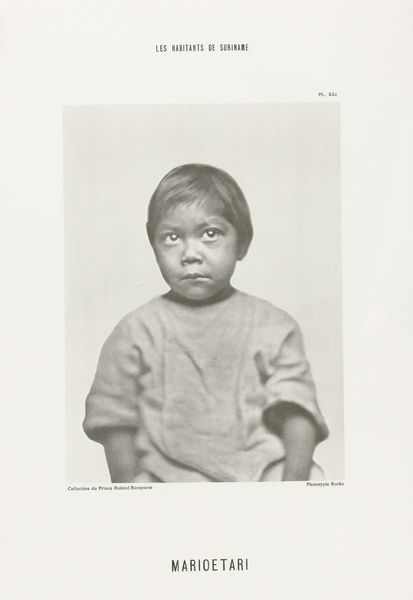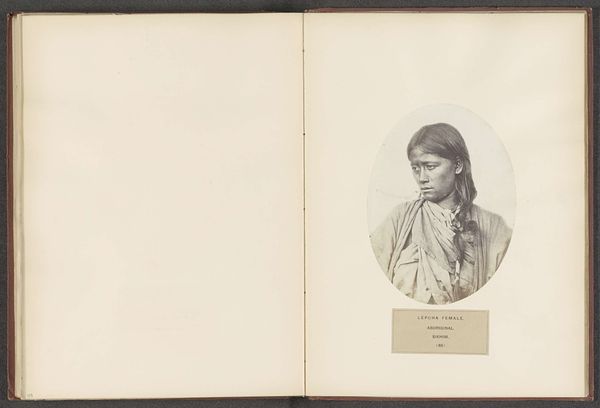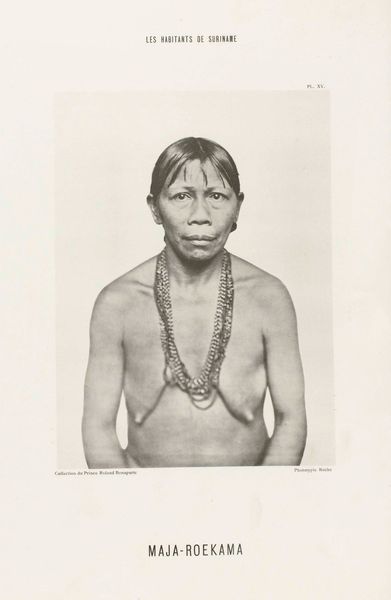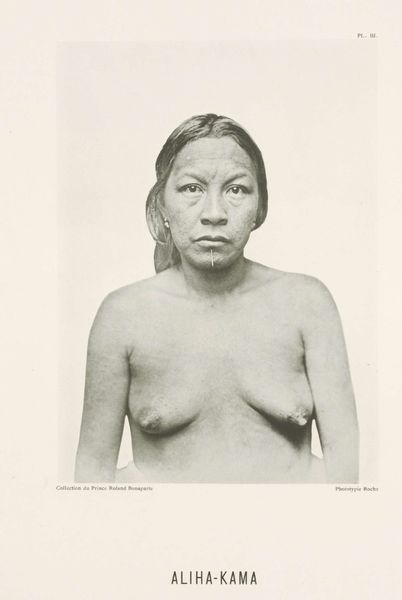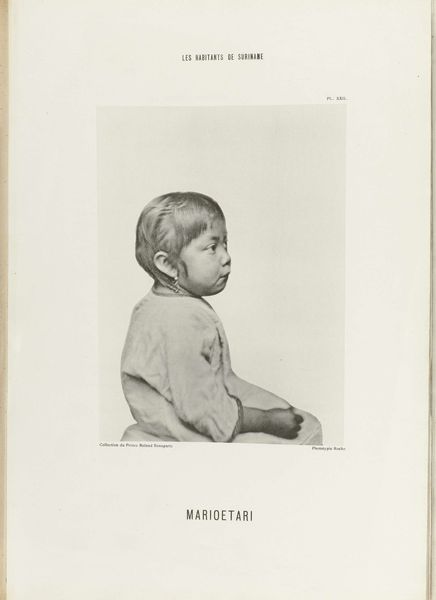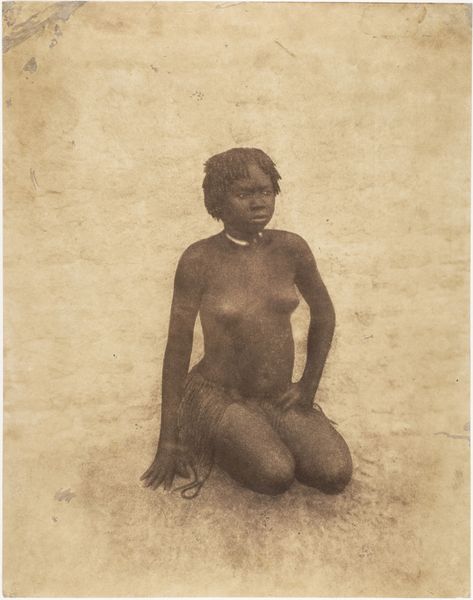
photography, gelatin-silver-print
#
portrait
#
photography
#
gelatin-silver-print
Dimensions: height 238 mm, width 174 mm
Copyright: Rijks Museum: Open Domain
Curator: This is Friedrich Carel Hisgen's "Portret van Awarahena," a gelatin-silver print made between 1883 and 1884. Editor: It's immediately striking; the starkness of the gelatin-silver print gives the portrait a raw, almost unsettling honesty. There’s a fragility in her gaze. Curator: Hisgen captured this image as part of a broader ethnographic project documenting the inhabitants of Suriname. Considering that, this portrait raises questions about representation and power dynamics, wouldn't you agree? Editor: Absolutely. I am most interested in the circumstances surrounding the image's creation, especially the labor that was invested in producing the print, but I find the setting unsettling. I imagine the production conditions might have been quite strenuous. The subject's identity is tied up with how images are used to study the labor process itself. Curator: Precisely. And consider how Awarahena, as a young indigenous girl, might have been positioned within colonial discourse. Her nudity, the directness of her gaze...it all speaks to the objectification inherent in ethnographic photography of the time. Was this image used to re-inscribe stereotypical narratives? Editor: The way light interacts with the gelatin-silver also suggests the photographer was aware of crafting a scene; the light catches her face evenly but is starker around her shoulders. It begs the question of control over how indigeneity is visually depicted. Curator: Indeed. We must think critically about how this portrait contributes to—or perhaps challenges—the prevalent, often exoticizing narratives about indigenous peoples, particularly within the context of colonialism. How much agency did Awarahena have in this exchange? And how might her own community have viewed this depiction? Editor: This is also interesting. Thinking about the original purpose of the image, did its mode of manufacture also support that end, or did it accidentally create an opposing statement through the labor invested? Curator: A truly valuable thought. Looking at Hisgen’s portrait offers insight into these crucial, difficult conversations surrounding cultural representation and historical power imbalances. Editor: Agreed. I believe it shows a complicated relationship, but it is possible for images to possess critical agency.
Comments
No comments
Be the first to comment and join the conversation on the ultimate creative platform.
